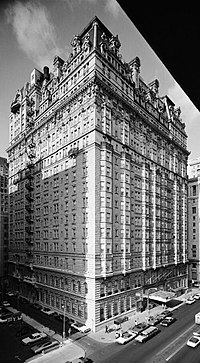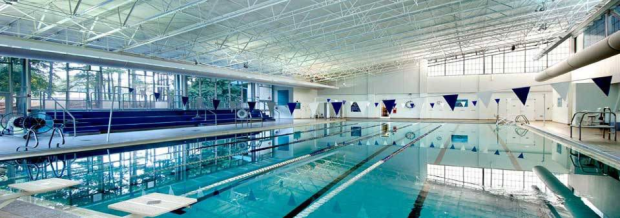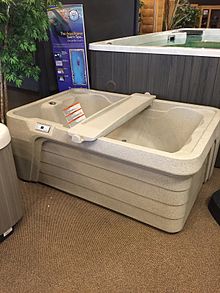In July 1976, a severe outbreak of a type of pneumonia occurred at a convention of the American Legion in Philadelphia. It eventually infected scores of people, and at least 29 of them died.
The incident caught the attention of the nation. A mysterious illness is always scary, but this one had a kind of cruel resonance, because the military veterans had chosen the place and time of their convention as a way of celebrating the 200th anniversary of the United States.

The outbreak was later traced to the hotel where the Legionnaires stayed.
Because of the circumstances under which it appeared, the disease became known as Legionnaires’ disease, and the previously undiscovered bacterium that caused it was dubbed Legionella.
Decades later, health officials are reporting that cases of Legionellosis (which includes Legionnaires’ disease) are on the rise, both in Georgia and nationally.
Nine in 10 outbreaks are caused by preventable water management problems.
Legionellosis is a respiratory illness. It occurs after people breathe in water vapor containing the water-borne bacteria. In more serious cases, it can lead to the pneumonia called Legionnaires’ disease. Neither illness is spread person to person, but people over age 50 and those with weakened immune systems are more susceptible to developing the disease.
Recently, the J. M. Tull YMCA in Lawrenceville closed its pool and shower area after the Gwinnett County Health Department linked at least two cases of Legionella infections to that location.
Also this month, health officials say three more cases of Legionnaires’ disease have been reported in Orange County, Calif., bringing the total to 15. So far, two people have died as a result of the outbreak.
The CDC says the number of cases has been increasing since 2000. Each year, 8,000 to 18,000 people in the United States are hospitalized with Legionnaires’ disease, the agency says.
Rooting it out is not easy
Georgia has recorded 157 Legionella cases — 14 of them fatal — this year, higher disease numbers than the past three years, and up from just 55 in 2011, according to the state Department of Public Health.
“The CDC says from 2000 to 2014 the numbers have almost quadrupled,” said DPH spokesperson Nancy Nydam. “The Georgia numbers as well as the national numbers reflect, in part, increased awareness and attention to Legionella and increased testing.”
The Lawrenceville YMCA agreed to close its aquatic areas after the Gwinnett County Health Department launched an investigation.

Because the probe is not yet over, the exact number of cases and details of the outbreak are unclear. If two or more cases can be linked in place or time, the health department investigates it as an outbreak, according to Summer Nix, spokesperson for the Gwinnett Health Department.
The pool and other areas were closed for four days while the branch took action to bring it up to health department and CDC standards. Post-testing is scheduled for this week.
The pool area has reopened at the YMCA branch.
“We are currently in full operation after going through the approved remediation plan,” says YMCA spokesperson Angie Clawson. “YMCA members and guests have been very understanding and appreciate the Y taking the matter seriously and addressing [it] immediately.”
Remediation included flushing the pipes and refilling them with water that was heated and hyper-chlorinated.

But the bacteria can remain after remediation, according to Allison Chamberlain, epidemiology assistant professor at Emory University’s Rollins School of Public Health.
“It’s a challenging bacteria to get rid of,” Chamberlain says. “It can be a headache in large buildings.”
The bacteria can be especially hard to control in renovated buildings, where “dead legs” of plumbing can cause water to stagnate in pipes and create conditions for the microbes to breed, she says.
New and old pipes are at risk, she says, and the end of summer and the beginning of fall usually see spikes in cases because the bacteria thrive in warmer water.
Regular testing for Legionella is not mandated by law.
Experts have a hard time nailing down why cases seem to be increasing. It’s unclear if the bacteria and disease are becoming more prevalent; or if reporting and diagnostics are improving, which would inflate the numbers from previous years.

Because the large baby boomer generation is aging into an older cohort, the increase in cases might be due to the higher number of disease-susceptible people, according to Chamberlain. “There are just more people in those demographics,” she says.
“But you can’t rule out increased aging infrastructure,” she added, noting that stagnant pipes and plumbing are breeding grounds for bacteria, where they can hide from chlorine in bio-films and amoebas.
Though cases are on the rise, legionellosis is treatable with antibiotics. According to the CDC, about one in 10 cases are deadly.
Chamberlain was a part of the first national multidisciplinary workshop on legionellosis in more than 25 years, held at Emory last year. Long-term research on the disease is lacking, she says, and she’s working with health departments across the nation to collect data that can improve understanding of the disease and its effects over time.
What you should know
Here are some guidelines from the CDC:
Legionnaires’ disease is usually treated successfully with antibiotics, but can sometimes be fatal.
Certain groups of people are more likely to become seriously ill when infected with Legionella:
• Individuals 50 years of age or older
• Smokers

• People with chronic lung disease
• Individuals with weakened immune systems
Legionella is naturally found in water, especially warm water. Hot tubs (or spas) that are not cleaned and disinfected enough can become contaminated with Legionella. People can become infected with Legionella when they breathe in steam or mist from a contaminated hot tub.
Legionella can also be found in cooling towers, plumbing systems, and decorative pools or fountains.
Symptoms include: cough, muscle aches, fever, shortness of breath and headache.
If you have pneumonia-like symptoms, see a doctor right away and mention if you have used a hot tub, or were away from home or in a hospital in the past two weeks.
Erica Hensley is a freelance writer based in Athens.

